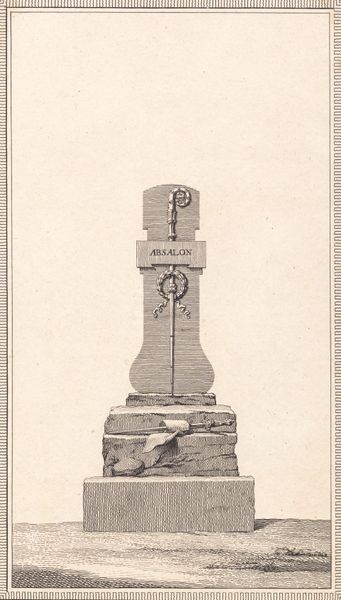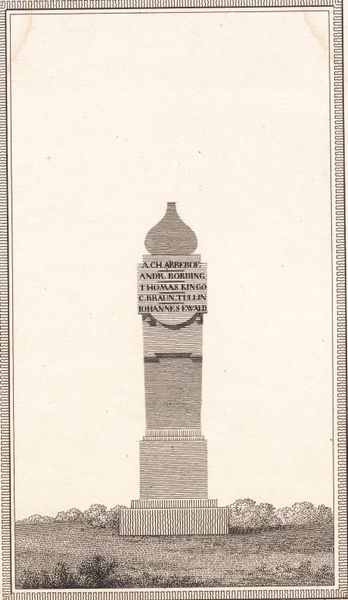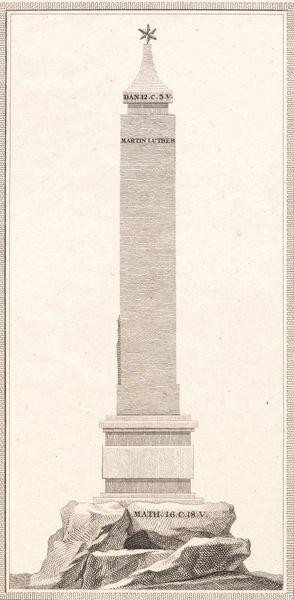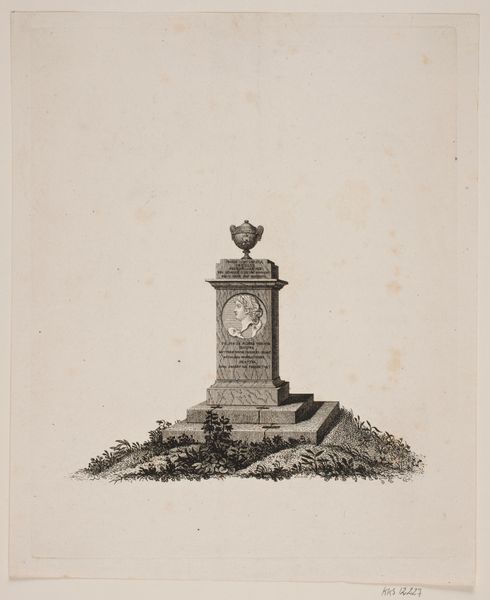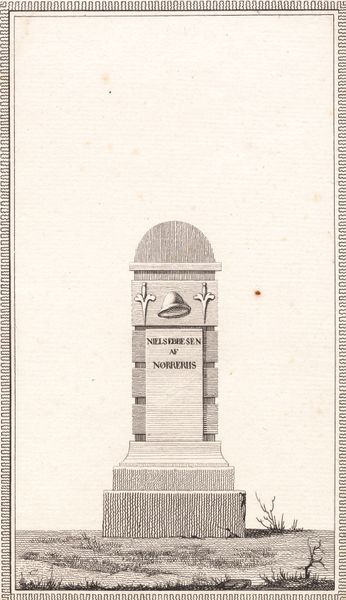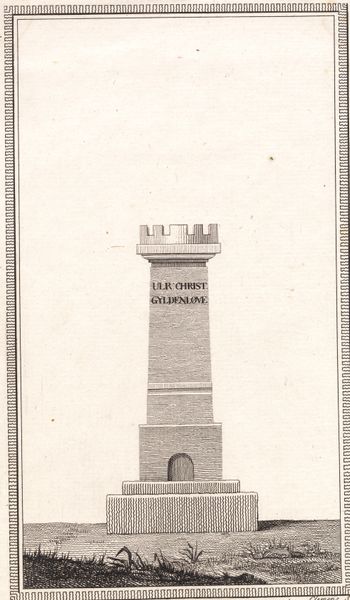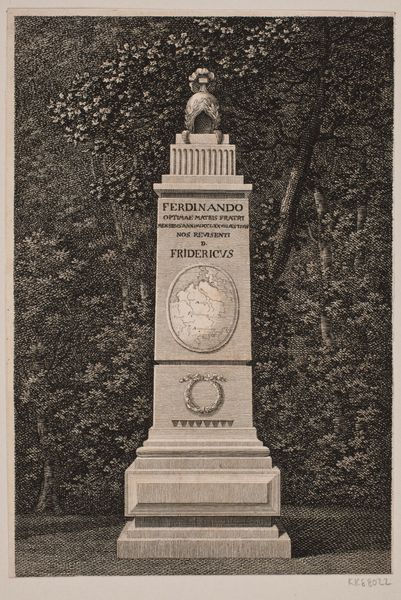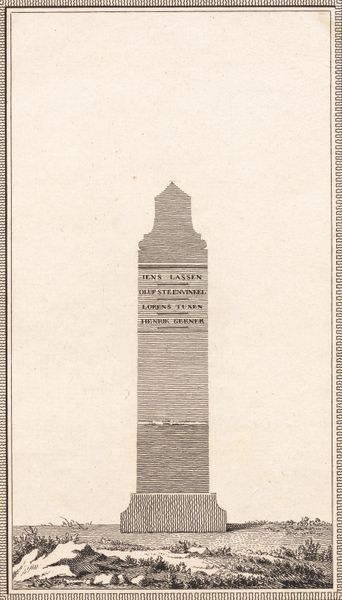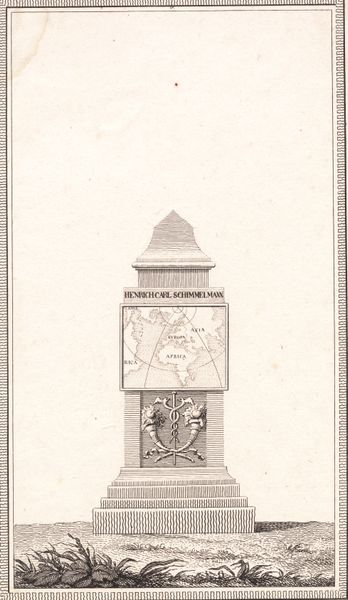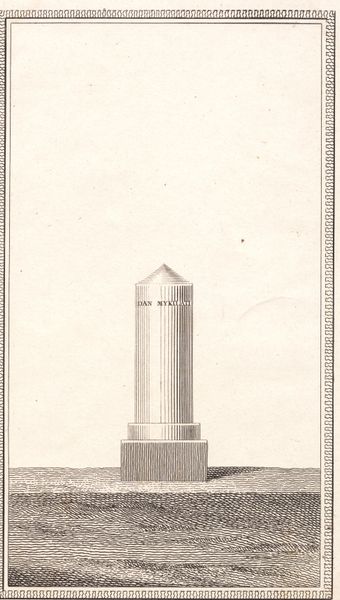
drawing, print, etching, engraving
#
drawing
#
neoclacissism
# print
#
etching
#
landscape
#
engraving
Dimensions: 178 mm (height) x 103 mm (width) (billedmaal)
Curator: It strikes me as powerfully restrained. An engraved print, mostly in blacks and whites, rendering a monument. It feels…solemn. Editor: This is "Peder Skram," an engraving and etching crafted between 1779 and 1781 by J.F. Clemens. Currently residing here at the SMK, it presents a distinct example of Neoclassical aesthetics employed in landscape—although it’s less landscape and more "memorial-scape." Curator: Precisely! The symbolism is layered: a pillar topped with what appear to be cannonballs, then the engraved name "Peder Skram", underneath a laurel wreath intertwined with what appears to be a ribbon, with a sheathed sword placed beneath it.. The sword feels less like a celebration of war and more like a symbol of duty fulfilled and then laid to rest. The wreath signifies honor, no doubt. But the overall feeling is subdued, as though this were a private memorial despite its grand architectural style. Editor: That reading aligns quite well with the Neoclassical penchant for virtue and civic duty. Skram was, indeed, a renowned naval hero. The engraving presents him not through dramatic portraiture, but instead through stoic, symbolic representation of a memorial. The artistic decision speaks volumes about how societal heroes were presented at that moment in history. Less about personal glory, more about the ideals they represented. Curator: Do you think there's an element of collective grief intertwined, especially if we place it in the socio-political atmosphere of its time? Monuments are not only for the hero, but also, perhaps even moreso, for the survivors, the ones who remain and carry forth the cultural implications and weight. Editor: A poignant consideration. Engravings, distributed as prints, became vehicles for disseminating such national narratives. The image allowed widespread participation in constructing shared memory of heroism. Skram wasn't just a person; his image, mediated through art, was leveraged to reinforce particular values. It highlights art’s important role in nation-building and memorializing individuals through a refined and almost solemn filter. Curator: It's far more profound than just a landscape, then; it encapsulates an era's perception of honor and remembrance and it reminds us how symbols continue carrying multiple messages through generations. Editor: Precisely, It provides an artistic insight into understanding the shaping of history and its key figures to be studied to this very day.
Comments
No comments
Be the first to comment and join the conversation on the ultimate creative platform.
